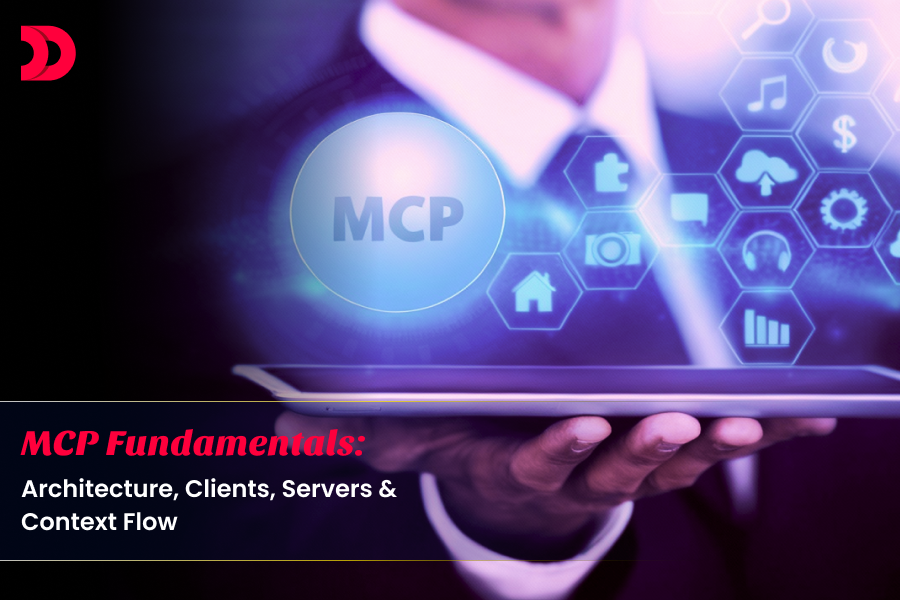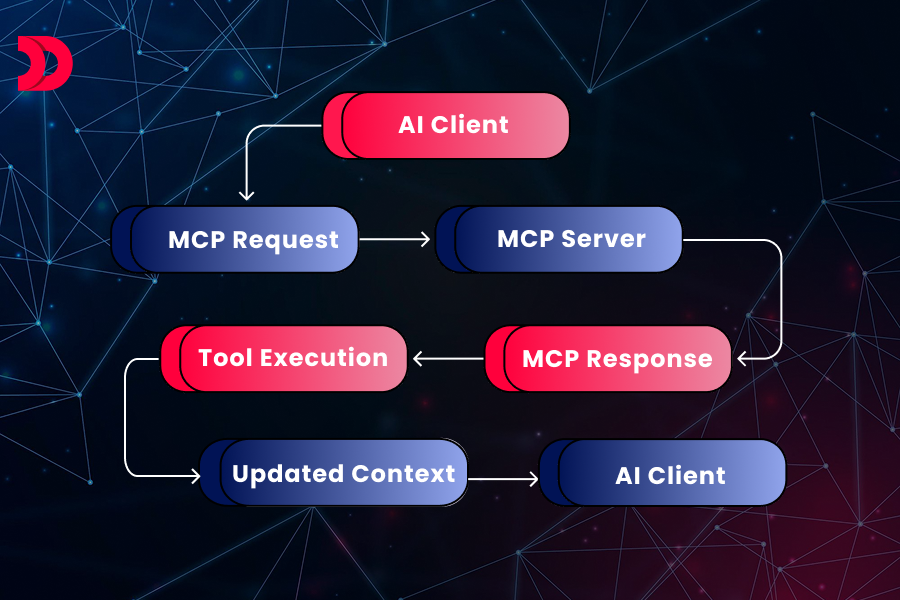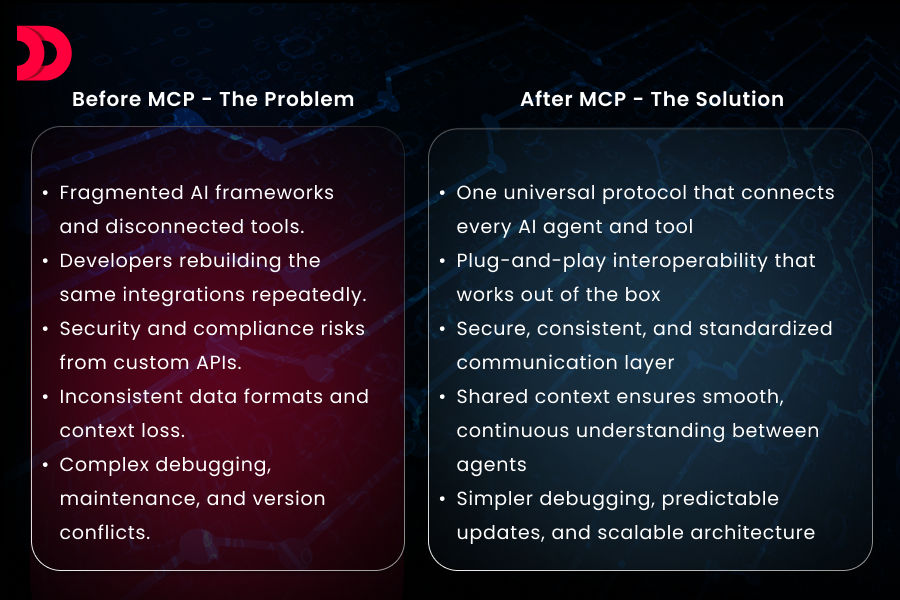MCP: The Next Big Thing in AI- What is It, How Does it Work?
Do you agree or not that these days of the AI ecosystem feel a lot like the early days of the internet? Everyone is excited, innovations are happening daily, but... Continue Reading

Well, do you know what truly makes the Model Context Protocol (MCP) work? It is not just the idea of standardization. It is the architecture that allows AI agents and tools to communicate smoothly. Or we can say a design that is built to simplify how intelligence flows between systems.
If you are curious to see what actually happens behind the scenes when one AI agent “talks” to another, this is the place to start.
But before that, let’s have a quick look at the blog summary.
The MCP architecture follows the well-known client–server model, but with one key difference. It is purpose-built for how AI thinks and remembers. Instead of simple data transactions, MCP ensures contextual continuity, allowing multiple tools and agents to collaborate seamlessly.
Let us break it down in detail.

The client is the starting point of every interaction. It is the AI model, framework, or agent that initiates requests, such as fetching a document, scheduling a task, or analyzing data.
The client’s job is to ask. It understands the context of what is needed but does not worry about how the server executes it. Because both sides follow MCP, the same client can talk to hundreds of tools without writing custom connectors.
In short, the client is the brain that asks questions and processes the answers.
The server is where the action happens. It performs the requested operations and returns results in a standardized MCP format.
Examples include:
Every server that implements MCP instantly becomes compatible with all MCP-based clients. That means one-time integration and lifetime interoperability.
This is the blueprint that keeps communication accurate. Tool definitions describe what each server can do, while schemas define how requests and responses are structured.
It ensures every tool follows the same format, so developers can predict behavior, debug faster, and avoid miscommunication between agents.
This is where MCP becomes more than a technical layer — it becomes intelligent. Every request and response carries context, so the system remembers what has already happened.
Example flow:
Nothing is lost because the context keeps moving through the flow
See how MCP lets you connect AI agents and tools without custom code.
Explore a Free Architecture Blueprint
To truly understand how MCP functions, it helps to visualize the full journey of a request from the moment an AI agent asks for something to when a tool completes the action and sends back context.
This flow demonstrates how MCP keeps every exchange structured, traceable, and meaningful, without developers having to write one-off bridges for each tool.
| Step | Action |
| 1 | The AI client sends a structured request using MCP |
| 2 | The MCP server receives and executes the tool function |
| 3 | The server sends back the response in the MCP format |
| 4 | The client interprets the response and updates the context for the next request. |
Here is how you will be able to see a quick difference between the problem and solution before and after introducing the MCP in your development architecture.

Yes, MCP eliminates integration chaos and gives developers a standard they can trust.
Adopt a protocol-first approach that saves time and reduces errors across your AI stack.
Talk to Our Solution Architects
For developers, MCP is a productivity booster.
For businesses, it is a scalability engine.
Developer Advantages:
Business Benefits:
MCP turns isolated AI tools into coordinated ecosystems. When developers understand its architecture, they unlock faster innovation and safer scaling.
It is to AI what TCP/IP was to the internet, the protocol that makes everything work together.
Build AI systems that collaborate, learn, and scale with MCP.
Book Your Free Consultation
Frequently Asked Questions
Traditional APIs focus on data transfer. MCP adds context exchange and standardized schemas so AI agents can understand and collaborate intelligently.
Yes, your existing AI frameworks can integrate easily with MCP. Well, any AI framework or tool can implement MCP as a client or server layer to enable seamless communication with others.
MCP uses defined authentication and authorization mechanisms within the protocol, it reduces the risks from custom API keys or ad-hoc integrations.
The main hurdle is that ecosystem adoption tool providers must implement the standard for network-wide compatibility. Once done, it simplifies everything.
Not at all. While built for AI, its context-exchange model can benefit any system that requires autonomous decision-making and multi-tool coordination.
Start by mapping current tool integrations and identifying where MCP can reduce redundancy. Our team can help you create an adoption plan.
Interesting question. Well, the team reports up to 50% faster development cycles and a significant reduction in integration costs once their systems act with MCP.
Do you agree or not that these days of the AI ecosystem feel a lot like the early days of the internet? Everyone is excited, innovations are happening daily, but... Continue Reading
Feel free to call or visit us anytime; we strive to respond to all inquiries within 24 hours.
